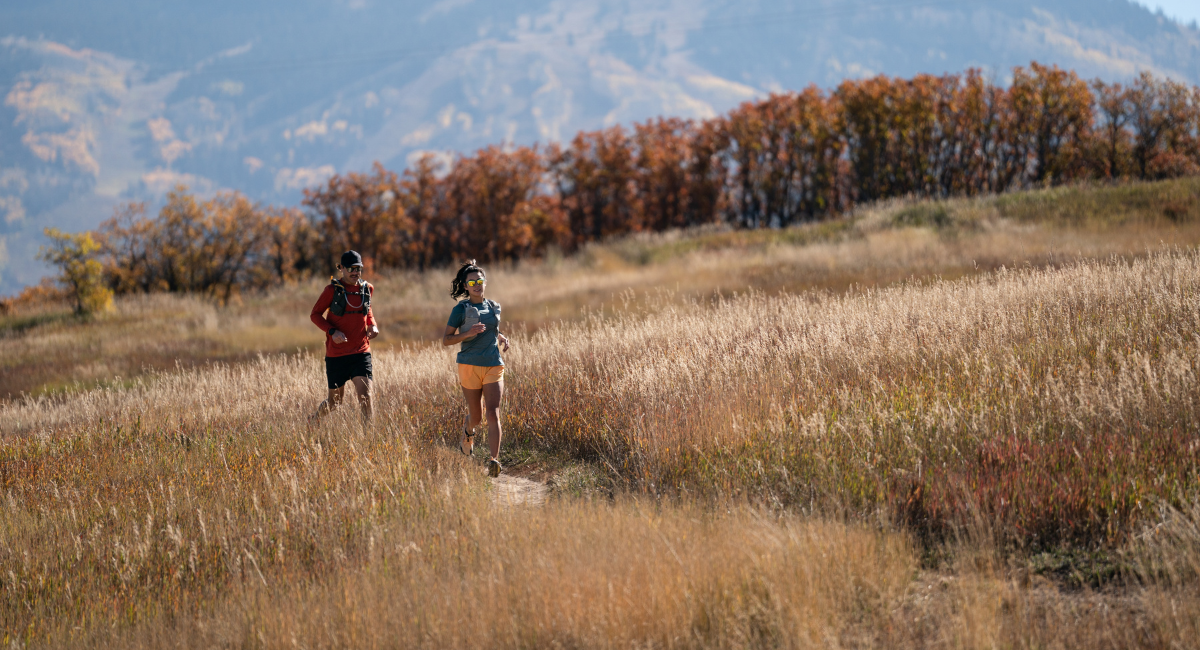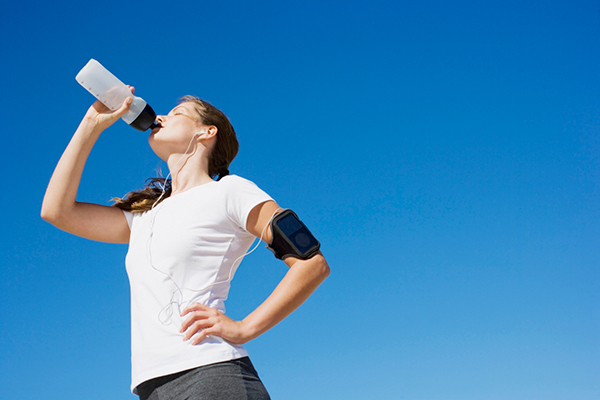Embarking on a trail run is an fantastic way to explore the outdoors, challenge your fitness, and experience nature in a way that road running simply can’t match. But heading off-road means preparing for unpredictable conditions, varied terrain, and the need to be self-sufficient. Whether you’re a beginner or a seasoned trail runner, having the right trail running kit list is essential for comfort, safety, and performance.
This guide will walk you through every essential item, explain why each is important. We’ll cover everything from shoes and clothing to navigation, nutrition, and emergency supplies, ensuring you’re ready for any adventure—rain or shine.
First...What Is Trail Running?
Trail running is a type of running that takes you off the beaten path—literally. Instead of sticking to roads, pavements, or tracks, trail runners head out into nature, following unpaved routes like dirt trails, forest paths, and mountain tracks. It’s all about exploring the great outdoors while you run, letting the scenery and the terrain become part of your experience.
Many people wonder: what makes trail running different from road running? The main difference is the surface. Trail running is done on natural, uneven ground—think mud, roots, rocks, and sand—which means every run is a bit of an adventure. You might find yourself jumping over streams, ducking under branches, or climbing gentle hills, all while enjoying fresh air and beautiful views.
Trail running is popular with people who want to escape the busy city, get away from traffic, and enjoy a more relaxed, natural way to exercise. It’s not just about speed or distance; it’s about enjoying the journey, being present in nature, and sometimes even spotting wildlife along the way. Whether you’re a beginner looking for a fun new way to get active, or an experienced runner wanting to try something different, trail running is a great choice.
This sport is growing quickly, with more and more people discovering its benefits for both the body and the mind. Trail running helps improve balance, strength, and endurance, and it’s a fantastic way to reduce stress and boost your mood. Plus, with so many beautiful places to explore, it’s easy to find a trail that suits your fitness level and interests.
Why Is a Trail Running Kit List Important?
Trail running presents a unique set of challenges that distinguish it from road running, making a carefully considered kit list absolutely essential. The environment you’ll be traversing is often unpredictable—terrain can shift from muddy paths to rocky outcrops, from gentle inclines to steep descents, sometimes within the same run. Weather conditions can change rapidly, especially in mountainous or rural areas, and help may not be immediately available if something goes wrong. Unlike a typical road race where aid stations and crowds are common, trail running often means being alone or in small groups, far from immediate assistance. This is why carrying the right gear is not just about comfort, but about safety and self-sufficiency.
A well-prepared trail running kit helps you adapt to changing conditions, protects you from the elements, and ensures you have the essentials to handle minor injuries or unexpected delays. It also gives you peace of mind, allowing you to focus on the experience and enjoy the beauty of the outdoors. The goal is to strike a balance between carrying enough to be safe and not overloading yourself with unnecessary items that can slow you down or cause discomfort.

Essential Trail Running Shoes
Why trail running shoes are essential? Unlike road running shoes, which are designed for smooth, even surfaces, trail shoes are engineered to handle the rough, uneven, and often slippery conditions found off-road. The importance of trail-specific shoes lies in their ability to provide grip, protection, and stability on unpredictable terrain.
When choosing trail running shoes, consider the type of terrain you’ll be running on. For muddy or wet trails, look for shoes with deep, aggressive lugs and sticky rubber outsoles that provide excellent traction. On rocky or technical terrain, shoes with rock plates or reinforced toe caps are essential to protect your feet from sharp rocks and roots. For long-distance runs or ultramarathons, comfort and cushioning become even more important, as you’ll be on your feet for extended periods.
Materials play a significant role in the performance and durability of trail shoes. Most trail shoes use synthetic mesh uppers for breathability and quick drying, while some incorporate waterproof or water-resistant membranes like Gore-Tex for wet conditions. The midsole is typically made from EVA or polyurethane foam for cushioning, and the outsole is constructed from durable rubber compounds designed to withstand abrasion and provide grip.
Features to look for include a snug but not tight fit, ample toe box space to prevent blisters and allow for natural foot movement, and a secure lacing system to keep your foot stable on uneven ground. Many trail shoes also offer additional ankle support or gaiter attachments to keep debris out. Brands such as Salomon, Brooks, and Saucony are renowned for their trail running models, each offering unique features tailored to different running styles and terrains.
Running Backpacks and Hydration Vests
A running pack or vest is an indispensable part of your trail running kit, providing a convenient way to carry water, food, extra layers, and safety gear. The right pack should be lightweight, comfortable, and designed specifically for running, with features that minimise bounce and chafing.
Running packs come in various sizes, typically ranging from 5 to 12 liters in capacity. Smaller packs are suitable for short runs or races with mandatory gear requirements, while larger packs are ideal for long-distance adventures or self-supported runs. Look for packs with adjustable straps, breathable mesh panels, and multiple pockets for organized storage.
Hydration compatibility is a key feature, with many packs designed to accommodate water bottles or hydration bladders. Some models include insulated sleeves to keep water cool in hot weather or prevent freezing in cold conditions. Additional features to consider include reflective detailing for visibility, attachment points for trekking poles, and secure pockets for valuables.
When packing your running pack, prioritise essentials such as snacks, an extra layer, a first aid kit, a mobile phone, a map and compass, a whistle, and an emergency blanket. For longer or remote runs, consider adding a lightweight bivvy or survival shelter for added safety.

Trail Running Clothing and Layering
Trail running clothing is all about adaptability and protection. The weather in outdoor environments can shift dramatically, and the right clothing system allows you to adjust quickly and stay comfortable throughout your run. Layering is a fundamental concept, enabling you to add or remove garments as conditions change.
A moisture-wicking base layer is the foundation of your clothing system. This layer sits next to your skin and is responsible for moving sweat away from your body, helping you stay dry and reducing the risk of chafing and discomfort. Synthetic materials like polyester or blends are common for their quick-drying properties, while merino wool is a popular natural alternative known for its moisture management, odor resistance, and temperature regulation.
For cooler conditions, a mid layer adds warmth without adding bulk. Lightweight fleece or technical fabrics designed for running provide insulation while remaining breathable. The outer layer is your shield against wind, rain, and cold. A windproof and water-resistant jacket is essential, especially in changeable weather. Look for jackets made from lightweight, packable materials like nylon or polyester with a durable water-repellent (DWR) coating. Some jackets also feature taped seams for extra waterproofing and adjustable cuffs and hems for a customisable fit.
Bottoms should be chosen based on the weather and personal preference. Running shorts are ideal for warm conditions, offering freedom of movement and ventilation. For cooler or more technical terrain, running tights or leggings provide warmth and protection. Look for materials with stretch and durability, such as nylon-spandex blends, and features like zippered pockets and reflective details for safety.
Navigation and Safety
Navigation and safety are paramount when running off-road, where trails can be poorly marked or intersect with other paths, increasing the risk of getting lost. Reliable navigation tools are essential for staying on course and finding your way back if you stray from the trail.
A map and compass are the most dependable navigation tools, as they don’t rely on batteries or signal. Learning basic map-reading and compass skills is a valuable investment for any trail runner. GPS devices and smartphones with mapping apps are also popular, offering real-time location tracking and route planning. However, it’s important to carry a portable charger and keep your device protected in a waterproof case.
A whistle is a simple but effective safety tool, as its sound carries much farther than your voice and can be used to signal for help in an emergency. Telling someone your planned route and expected return time is another critical safety measure, ensuring that someone knows where to look if you don’t return as scheduled.
Checking the weather forecast before your run and being prepared for changing conditions is also essential. Sudden storms, temperature drops, or high winds can turn a pleasant run into a challenging situation. Carrying a first aid kit with blister plasters, bandages, pain relief, and any personal medication is a must for handling minor injuries on the trail.
Hydration and Nutrition
Hydration and nutrition are vital considerations for trail running, especially on longer routes or in challenging conditions. Unlike road running, where aid stations are common, trail runners often need to be self-sufficient, carrying their own water and snacks.
Hydration options include handheld bottles, hydration vests, and waist belts. Handheld bottles are lightweight and convenient for shorter runs, while hydration vests and packs are ideal for longer distances, offering larger water capacity and additional storage for gear and food. Look for hydration systems with insulated tubes to prevent water from freezing in cold weather and leak-proof designs for reliability.
Nutrition is equally important, as trail running burns more calories than road running due to the varied terrain and increased effort. Energy gels, chews, and bars provide quick, easily digestible carbohydrates to fuel your run. It’s important to experiment with different products during training to find what works best for your stomach and energy needs.
As a general guideline, aim to drink regularly and consume 30-60 grams of carbohydrates per hour to maintain energy levels. For runs lasting more than an hour, consider carrying electrolyte tablets or drinks to replace lost salts and minerals. The key is to stay ahead of dehydration and energy depletion, as both can significantly impact your performance and safety on the trail.
Electronics and Gadgets
Electronics and gadgets can enhance your trail running experience by providing navigation, tracking, and safety features. A GPS watch is one of the most popular tools, offering route tracking, distance measurement, and pace monitoring. Models like the Garmin Fēnix and Forerunner series are widely used for their reliability and advanced features, including heart rate monitoring, altitude tracking, and weather alerts.
A mobile phone is a versatile tool for navigation, emergencies, and capturing photos of your adventure. Protect your phone with a waterproof case and consider carrying a power bank for longer runs. Additional gadgets such as heart rate monitors and compact cameras can provide extra data and memories, but the focus should always be on reliability and minimal weight.
Don’t Forget: Essential Personal and Safety Items
When preparing for a trail run, it’s easy to focus on shoes, clothing, and hydration, but there are a few small yet crucial items that can make a big difference if things go wrong or if you need help. These are the things you hope you’ll never need but will be grateful to have if the unexpected happens.
Identification and Emergency Contact Information
Carrying a form of identification is a simple but vital safety measure. A driver’s license, passport card, or a dedicated emergency ID bracelet can help first responders identify you and contact your loved ones if you’re injured or unable to communicate. Some runners prefer to write their name, emergency contact details, and any relevant medical information on a piece of paper and keep it in a waterproof pouch inside their pack. This takes up almost no space but provides peace of mind.
Other Essential Items
A small amount of cash can be useful for unexpected situations, such as needing to buy food or pay for transport if you have to cut your run short. Coins or notes can also be handy for parking meters or public transport if your route changes. An emergency contact card with your name, phone number, and the details of a trusted friend or family member is another smart addition—just in case you lose your phone or can’t remember important numbers.
FAQs
Trail running gear is designed to handle rough, uneven terrain and unpredictable weather. It emphasizes protection, grip, and durability, while road running gear focuses on lightweight performance and speed.
Look for deep lugs for traction, rock plates for protection, durable materials, and a comfortable fit. Consider the type of terrain you’ll be running on and choose a shoe that matches your needs.
Choose a jacket that is windproof, water-resistant, and packable. Look for features like adjustable cuffs, a hood, and reflective details for safety.
Pack water, snacks, an extra layer, a first aid kit, a mobile phone, a map and compass, a whistle, and an emergency blanket. Adjust your pack contents based on the length and remoteness of your run.
Tell someone your route, check the weather, carry navigation and safety tools, and pack a first aid kit. Be prepared for changing conditions and know basic first aid techniques.
For runs under an hour, a handheld bottle is sufficient. For longer runs, carry at least 1 litre of water in a hydration vest or pack.
Wear double-layer, blister-free socks and well-fitting shoes. Apply anti-chafing cream if needed.
A compass is a reliable backup for navigation, especially in remote areas where GPS signal may be weak.
Related Articles








